This was published 2 years ago
The world's best UNESCO World Heritage sites: One man's mission to visit them all
By Michael Turtle
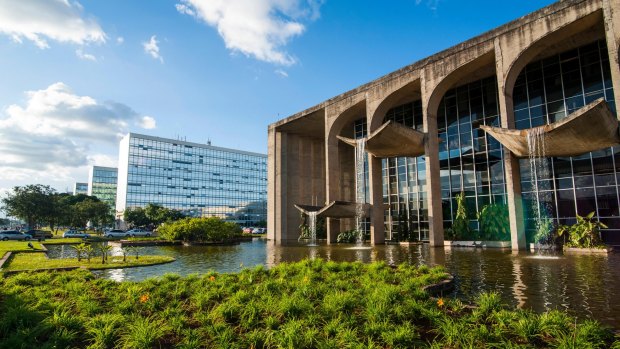
Ministry of Justice, Brasilia, Brazil. Brasília is an intriguing city that is both an architectural masterpiece and ongoing social experiment.Credit: Alamy
After more than a day of travelling through a remote part of Mexico – a journey that had included a long-distance bus, an overnight stay in a roadside inn, and a cramped ride in a share taxi – I reached Calakmul.
Well off the tourist trail, I was one of less than 10 visitors there that day, with an ancient metropolis almost to myself.
Once one of the largest Mayan cities with a population of 50,000 residents in the 6th century, the towering temples of Calakmul are now overgrown with jungle and home to howler monkeys (one of which terrified me with its screams reverberating off an imposing pyramid I was climbing).
The only reason I'd made the trek to Calakmul was because it's a World Heritage Site and I have a life goal to visit every place with this prestigious UNESCO designation.
What I discovered in these incredible jungle ruins didn't just make the trip worthwhile, it justified my ongoing mission. Because the World Heritage List is not just a series of landmarks, but a collection of places that tell our story, charting the history of the planet, in all its naturally-formed and human-made forms.
So far, I've been to 322 of the 1154 sites on the World Heritage List, from famous wonders such as Machu Picchu and the Giza Pyramids, to lesser-known places like the Fagus Shoe Factory in Germany, and the 11th-century Burana Tower minaret in the countryside of Kyrgyzstan.
This passionate, if not obsessive, interest, led me to pen the book, Great World Wonders: 100 Remarkable World Heritage Sites, on which this Traveller story is based.
It coincides with the World Heritage List figuring in the news in recent weeks with the addition by UNESCO of 34 new sites, the threat to declare the Great Barrier Reef as "in danger" and the sensational removal of the English city of Liverpool from the list because new buildings on its Victorian docks were said to be undermining the city's authenticity.
But beyond the headlines and the most popular landmarks is an incredible collection of places that each have their own fascinating tale to tell. There are too many to feature here so we've distilled them into our own condensed book of World (Heritage) Records. Let's hope we can soon resume visiting them.
THE FIRST INSCRIBED SITE
L'ANSE AUX MEADOWS, CANADA
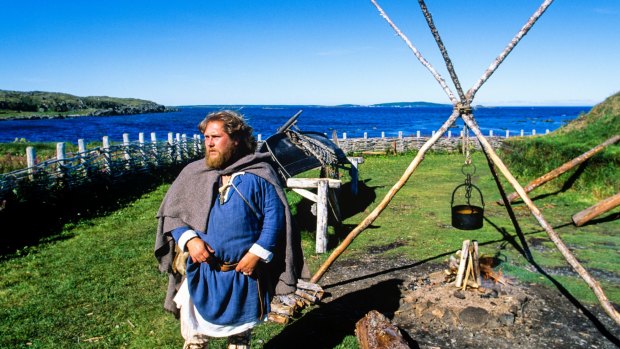
L'Anse aux Meadows National Historic Site, Newfoundland, Canada.
The first iteration of the World Heritage List was created in 1978 with just 12 sites. Although added simultaneously, the first officially listed is the L'Anse aux Meadows National Historic Site in Canada. On the northernmost tip of Newfoundland, the archaeological site contains the remains of wooden buildings from Norse explorers who arrived in the 11th century – the earliest known Europeans to reach North America. While some ruins are on display among the rugged cliffs and dramatic coastline, you can also enter replica homes with basic furnishings. See www.pc.gc.ca
THE TINIEST CULTURAL SITE
HOLY TRINITY COLUMN, OLOMOUC, CZECH REPUBLIC
It's not the Czech city of Olomouc's historic Upper Square that's a World Heritage Site, or any of the colourful Baroque buildings around it. Rather, it's just a single piece of art atop the cobblestones that's been recognised by UNESCO. The Holy Trinity Column, 17 metres wide and 32 metres high, is decorated with sculptures of Catholic saints on its lower levels and topped with a copper statue of the Holy Trinity. It's just one – but the best example – of the commemorative columns built in towns across Central Europe in the 18th century. See tourism.olomouc.eu
THE SMALLEST NATURAL SITE
VALLEE DE MAI, SEYCHELLES
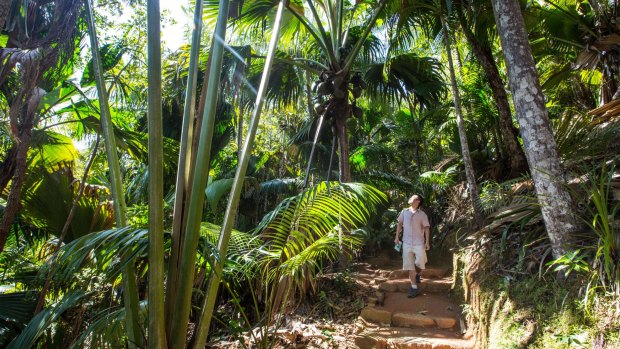
The Vallee de Mai Nature Reserve, Praslin Island, Seychelles.
Most of the natural sites on the World Heritage List are vast – epic deserts, imposing mountain ranges, huge swathes of ocean. It makes the Vallee de Mai nature park in the Seychelles seem tiny in comparison. At just 20 hectares, it's about two thirds the size of Canberra's Parliament House, but the lush palm forest within it is exceptional because it is unchanged since prehistoric times. Dominating the verdant landscape is the coco de mer, a tree with the largest seeds in the world, while it's also popular with keen birdwatchers seeking the rare black parrot. See sif.sc/vdm
THE MOST DISPERSED SITE
ARCHITECTURAL WORK OF LE CORBUSIER
(ARGENTINA, BELGIUM, FRANCE, GERMANY, INDIA, JAPAN, SWITZERLAND)
In recent years, there's been a trend to group together similar landmarks to create a single World Heritage Site – but nothing has gone to the extremes of a site called "Architectural Work of Le Corbusier". It consists of 17 modernist designs by the Swiss-French architect built during the mid-20th century. Spanning seven countries (and three continents), there are several houses in France but, further afield, highlights include the Capitol Complex in the Indian city of Chandigarh and the National Museum of Western Art in Tokyo. See fondationlecorbusier.fr
THE TALLEST CULTURAL SITE
EIFFEL TOWER, PARIS, FRANCE
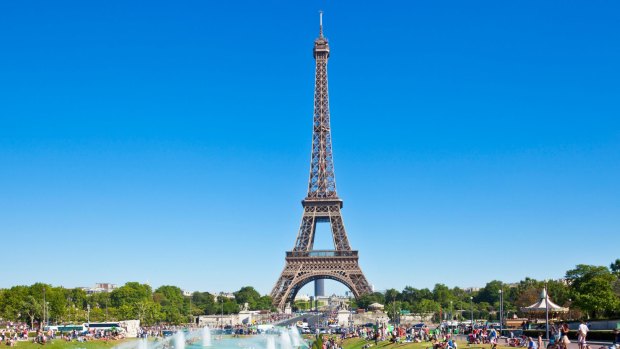
The Eiffel Tower, Paris. Credit: Alamy
Not just the tallest, but one of the most iconic sites, the 324-metre Eiffel Tower is a symbol of the intersection of art and engineering. Built for the 1889 World Fair, it was the tallest man-made structure on Earth until 1930 (surpassed by New York's Chrysler Building). Visitors (with mandated vaccine passports) can reach the 276-metre-high observation deck for incredible views across the city and the rest of this French World Heritage Site, which also covers dozens of monuments along a stretch of the Seine, set to become a focal point of the 2024 Paris Olympics, including the Louvre and Notre-Dame Cathedral. See toureiffel.paris/en
THE MOST VISITED SITE
WEST LAKE, HANGZHOU, CHINA
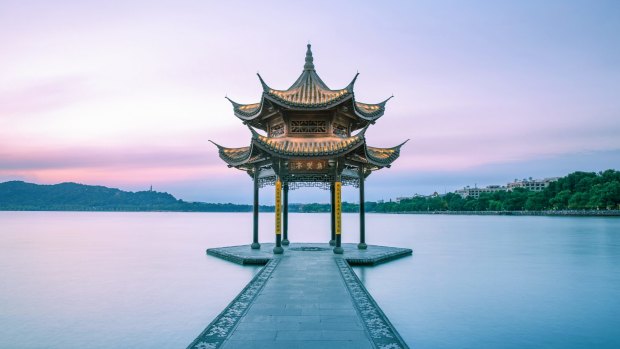
The Jixian Pavilion on the West Lake, Hangzhou.
THE OLDEST CITY SITE
DAMASCUS, SYRIA
In his 1869 travelogue, The Innocents Abroad, Mark Twain wrote of Damascus: "She has looked upon the dry bones of a thousand empires, and will see the tombs of a thousand more before she dies." Founded more than 5000 years ago, the Syrian capital is often declared to be the world's oldest continuously inhabited city – although nearby Aleppo (another World Heritage Site) also has a good claim to the title. Regardless, wandering the narrow streets of Damascus takes you through bustling bazaars into mosques, past churches, and over ancient temples, with layers of empires on top of each other. See whc.unesco.org
THE NEWEST CITY SITE
BRASÍLIA, BRAZIL
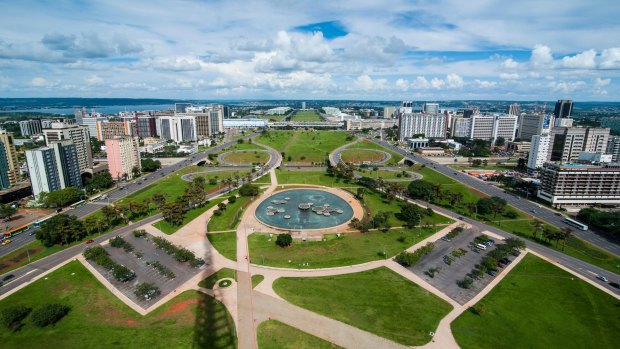
The view over Brasilia, Brazil.
THE MOST POIGNANT SITE
GENBAKU DOME, HIROSHIMA, JAPAN
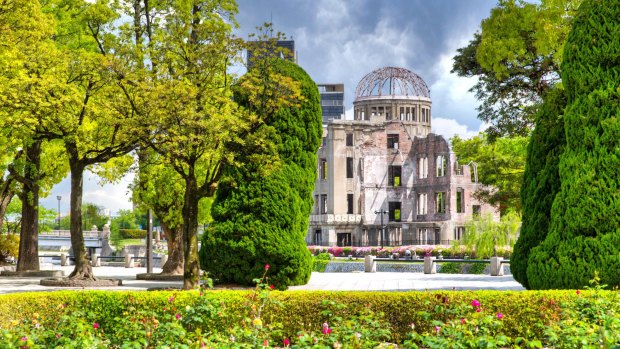
Genbaku Dome, Hiroshima, Japan.
Only a few places related to conflict have been added to the World Heritage List because of the inherent discord in their story. But, inscribed among controversy, was Genbaku Dome in the Japanese city of Hiroshima. The only structure left standing near the 1945 atomic bomb blast site, the remnants are now a memorial to those who were killed. China objected to the inclusion of Genbaku Dome over concerns it made Japan look too much like a victim, while the Americans argued the site didn't include enough historical context. But since its listing, more than 25 million people have visited.
THE MOST DISPUTED SITE
PREAH VIHEAR, CAMBODIA
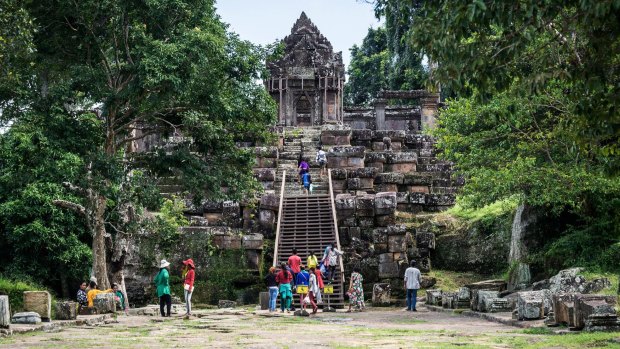
The Preah Vihear temple. Credit: Alamy
The ninth-century temple of Preah Vihear stretches for 800 metres over a series of staircases and platforms, Khmer motifs carved into the columns and doorways, with a clifftop view over the forest at the end. But its defining feature these days is not the design, but the battle over who it belongs to. Thailand also claims Preah Vihear, located near its border, and dozens of people have been killed in military action around the temple since it was declared a World Heritage Site. Even today, the Cambodian army surrounds the complex to protect it. See tourismcambodia.org
THE HIGHEST ENTRY FEE
PETRA, JORDAN
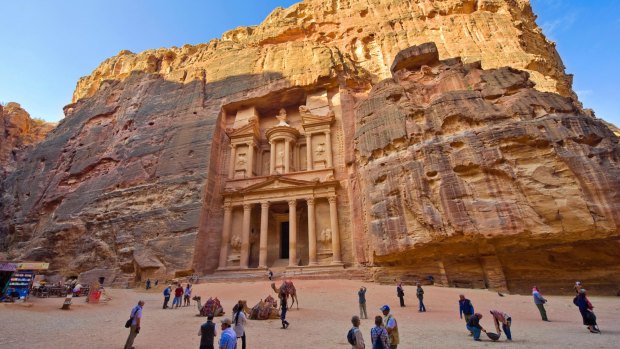
Knowing it's one of the world's greatest historical wonders only alleviates some of the pain of the eye-watering entrance fee for Petra: the equivalent of about $A175. But beyond the stress of the ticket booth, you'll find an ancient city, once home to 20,000 people, that's more than just the iconic Treasury tomb made famous by Indiana Jones. Hike up the cliffs for panoramic views and follow walking trails to monumental stone facades. It's also worth noting you can save about $78 by staying overnight in Jordan, eschewing day trips from nearby Israel. See visitpetra.jo
THE LARGEST SITE
FRENCH AUSTRAL LANDS AND SEAS (FRANCE)
The vastness of this marine World Heritage Site, covering 67 million hectares, is hard to comprehend for us land-dwellers. Stretching over a tract of the southern Indian Ocean that includes dozens of islands, it's about the same size as mainland France, of which it's a territory. The French Austral Lands and Seas has one of the highest concentrations of birds and marine mammals in the world, the remoteness of the site protecting them from human activity. By safeguarding such a large marine area, it allows scientists to research the whole ecosystem. See whc.unesco.org
THE OLDEST NATURAL SITE
BARBERTON MAKHONJWA MOUNTAINS, SOUTH AFRICA
Forget about measuring time in centuries or millennia – the age of South Africa's Barberton Makhonjwa Mountains is measured in giga-annum. The rock here dates back about 3.6 billion years and tells the tales of meteorite impacts, volcanism and the building of continents. It's also where some of the Earth's earliest life forms emerged. These days, easy hiking paths cross the rolling green mountains, over the most ancient of land, but some visitors prefer to drive the off-road trails to spot wildlife including zebras, cheetahs, and rhinoceros. See southafrica.net
THE OLDEST CULTURAL SITE
LOWER VALLEY OF THE AWASH, ETHIOPIA
When it comes to human history, it doesn't get much older than the Lower Valley of the Awash in Ethiopia, etched with wrinkles across its dry and rocky terrain. In 1974, researchers uncovered bone fragments of one of our early ancestors, dubbed "Lucy", who lived about 3.2 million years ago. Here, in the birthplace of humanity, palaeontologists have also found prehistoric tools and other evidence of early evolution. There's not much to see at the site, but Lucy's skeleton is now kept at the National Museum of Ethiopia in Addis Ababa, with a replica on public display. See whc.unesco.org
THE MOST RECENTLY INSCRIBED SITE
DANUBE LIMES: AUSTRIA, GERMANY AND SLOVAKIA
Last month, UNESCO added 34 new World Heritage Sites at its annual meeting. From the ancient Chankillo astronomical complex in Peru, to the 20th-century Trans-Iranian Railway stretching for 1394 kilometres across the Middle East, the new inscriptions again show the breadth of the world's history that's being protected. Officially, the last site to be added was the Danube Limes, a series of fortresses, roads, and other structures in Austria, Germany, and Slovakia that formed a defensive frontier of the Roman Empire two millennia ago. See whc.unesco.org
FIVE MORE SITES DOWN UNDER
OUR OLDEST CULTURAL SITE
WILLANDRA LAKES REGION, NSW
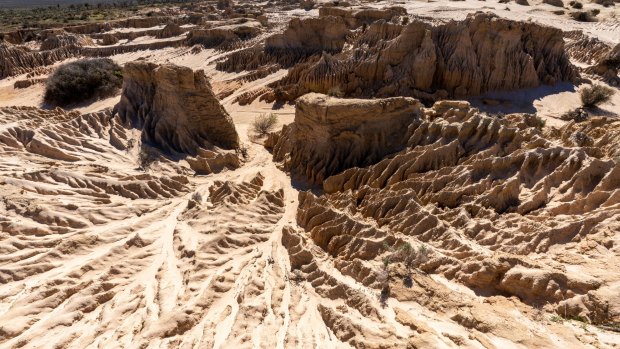
OUR MOST REMOTE SITE
HEARD AND MCDONALD ISLANDS
Set about 4100 kilometres from Perth, deep in the Southern Ocean near Antarctica, Heard and McDonald Islands is not only Australia's most remote World Heritage Site but the remotest on the planet. It's this isolation that makes these small frozen land masses so special. Almost completely untouched by humans or introduced species, there are large colonies of animals like penguins and seals. The islands also contain Australia's only volcanoes and glaciers, plus, at 2745 metres, our highest mountain, Mawson's Peak (sorry, Kosciuszko). See heardisland.antarctica.gov.au
OUR LARGEST LAND SITE
KAKADU NATIONAL PARK, NORTHERN TERRITORY
Waterfalls cascade over the dramatic escarpments of Kakadu in the wet season while, in the dry, the billabongs fill with wildlife. Kakadu is Australia's largest national park, stretching from wetlands to stone country, vibrant and teeming with life. Indigenous people have lived here for at least 65,000 years – with generations of history painted in the intricate rock art – and this continuous culture is one of the main reasons Kakadu has been protected as a World Heritage Site. See parksaustralia.gov.au
OUR MOST RECENTLY INSCRIBED SITE
BUDJ BIM, VICTORIA
Australia's newest World Heritage Site, added in 2019, celebrates an ancient aquaculture system that's been in use for more than 6000 years. The landscape of Budj Bim, near Portland in south western Victoria, was carved by lava flows, creating grooves the Gunditjmara people used to trap and harvest Kooyang eels. Tours will take you through the heritage of the ingenious system, while the large national park also has camping grounds, hiking paths, and mountain bike trails. See budjbim.com.au
OUR LARGEST MARINE SITE
GREAT BARRIER REEF, QUEENSLAND
The Great Barrier Reef narrowly avoided being added to UNESCO's World Heritage in Danger list this year but, despite the environmental pressures it's facing, the reef is still one of the planet's greatest natural wonders. With 400 types of coral and 1500 species of fish, it's remarkable not just for its size and biodiversity, but for the easy access from cities and towns along the Queensland coast (on Australia's west coast, another World Heritage Site, Ningaloo Reef, is the world's largest fringing reef).
Great World Wonders by Michael Turtle (Hardie Grant Travel RRP $45) See www.hardiegrant.com/au
Sign up for the Traveller Deals newsletter
Get exclusive travel deals delivered straight to your inbox. Sign up now.